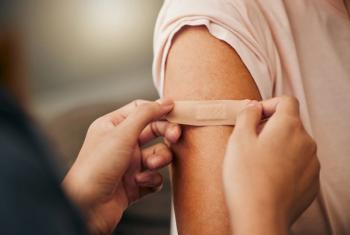
Gene Variant Linked to Vitiligo
Susceptibility to vitiligo appears to be associated with a major recessive gene, although environmental factors play a key role in onset of disease, according to a study published in the March issue of the Archives of Dermatology.
MONDAY, March 17 (HealthDay News) -- Susceptibility to vitiligo appears to be associated with a major recessive gene, although environmental factors play a key role in onset of disease, according to a study published in the March issue of the Archives of Dermatology.
Stanca A. Birlea, M.D., Ph.D., and colleagues at the University of Colorado at Denver and Health Sciences Center in Aurora, Colo., conducted a study of an isolated mountain community in northern Romania with a high frequency of vitiligo and associated autoimmune diseases. They studied the 51 affected people and all their close relatives in 35 nuclear families, constituting the whole population of the village.
As well as vitiligo, the villagers had an elevated frequency of autoimmune thyroid disease, adult-onset autoimmune diabetes mellitus and rheumatoid arthritis, the researchers report. Although the data indicated that a recessive gene was at the root of greater susceptibility to vitiligo, the fact that it is not completely heritable and does not fully penetrate the community indicates that other factors are at also play.
"This Romanian community may present a facile opportunity to map and ultimately identify a recessive gene that confers high risk of vitiligo and associated autoimmune diseases," the authors write. "While this gene variant is of particular importance in this isolated special population, it likely is also involved in disease susceptibility in the broader white population and, thus, is of broader importance."
Copyright © 2008
Newsletter
Access practical, evidence-based guidance to support better care for our youngest patients. Join our email list for the latest clinical updates.










